
While not yet extinct, the Sumatran Tiger is on the Critically Endangered list.
©Monka Betley, CC BY-SA 3.0, via Wikimedia Commons – License
Cats are members of the Felidae family of mammals ranging from huge predators to small docile house pets. Big predator cats are one of the most revered and the most hunted animals on the planet – an odd paradox. In one form or another, they’ve lived for millions of years alongside humans, but we’ve lost many species in that time. Although the list could be much longer, here are 7 extinct big cats.
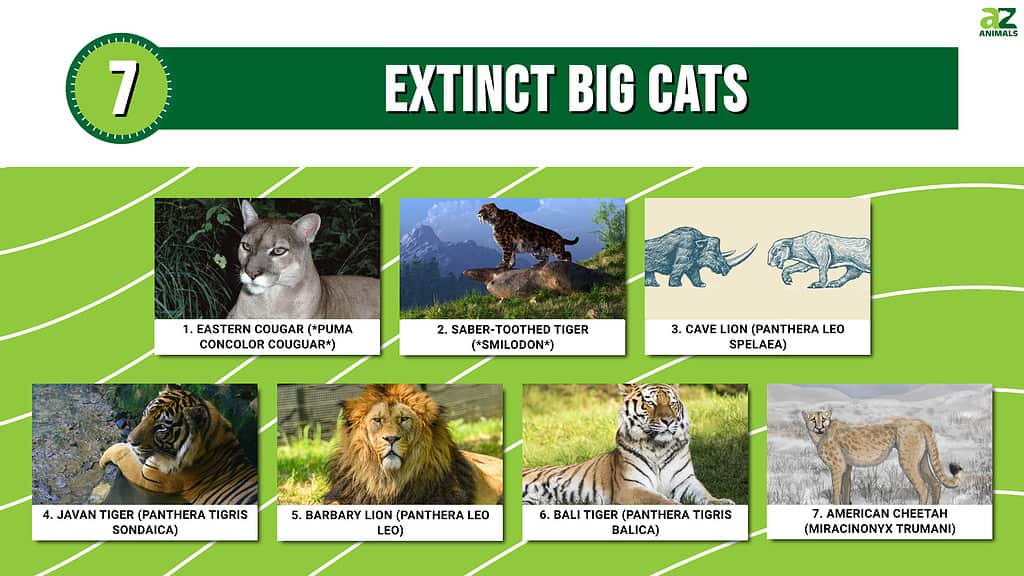
1. Eastern Cougar (Puma concolor couguar)
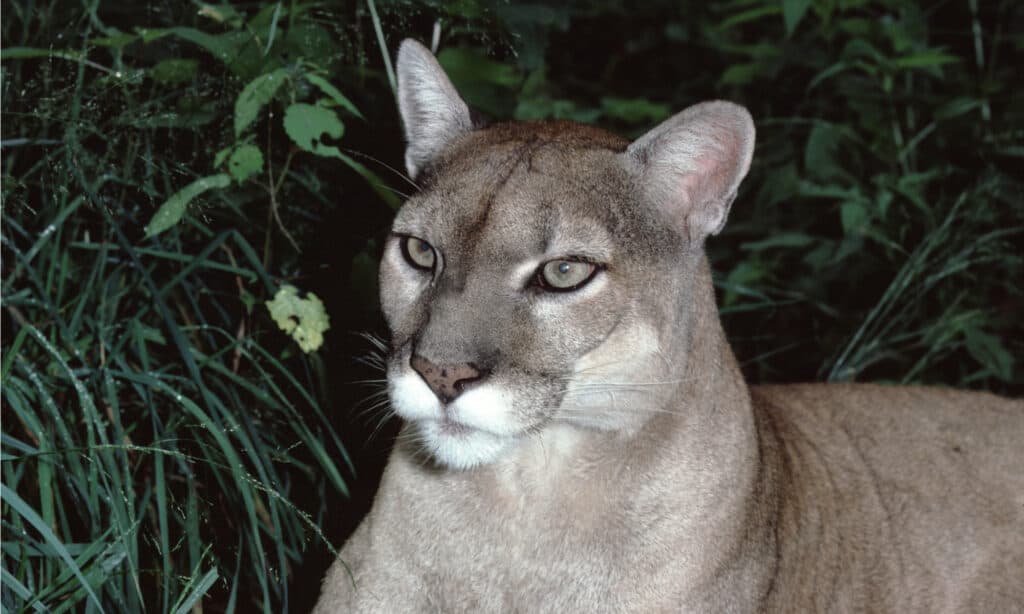
Eastern Cougars (
Puma Concolor Couguar) were officially declared extinct in 2018.
©Liz Weber/Shutterstock.com
The eastern cougar was a sub-species of cougar that inhabited North America’s eastern regions.
Cougars are the fourth largest cat species in the world. An eastern cougar reached 2 – 2.5 feet tall and 7.5 feet long. It had a pale brown coat with a lighter belly and mouth and preyed on white-tailed deer, beavers, and even porcupines!
They were declared extinct on the 22nd of January, 2018, but some experts believe they had actually been extinct since the 1930s. However, there is some considerable debate on whether eastern cougars are actually extinct. There are multiple sightings every year, but big cat experts believe these are actually roaming western cougars colonizing the east or even escaped captives.
The eastern cougar was most likely overhunted and unable to produce enough young to save itself from extinction.
2. Saber-Toothed Tiger (Smilodon)
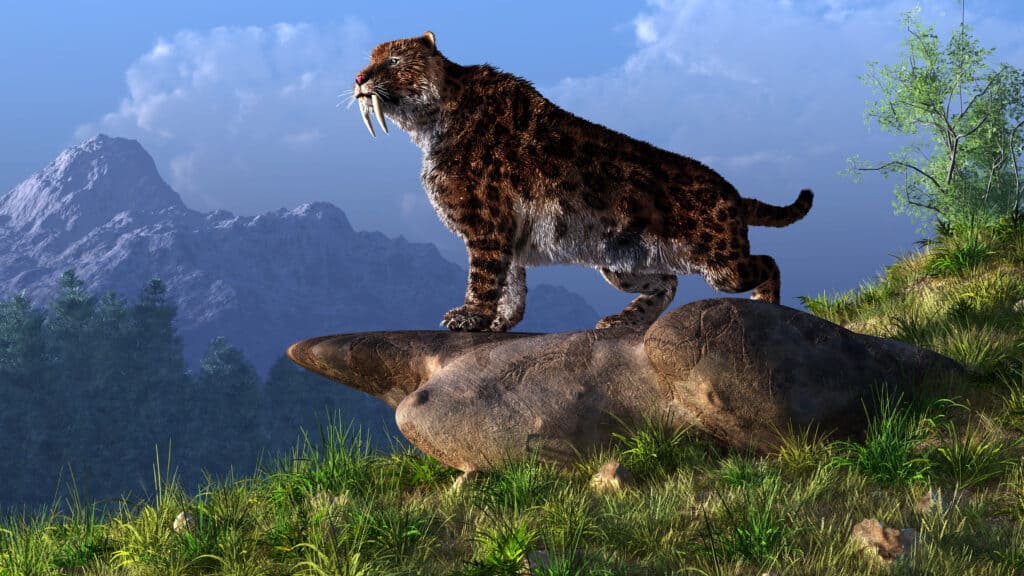
Saber-toothed cats became extinct at the end of the last Ice Age
©Daniel Eskridge/Shutterstock.com
Saber-toothed tigers went extinct around 11,000 – 8,000 years ago at the end of the last Ice Age. Saber-tooth cats were named for their huge teeth that measured 7 inches long. Because these teeth were so large, they had a much wider jaw span than today’s big cats.
There were three subspecies of saber-tooth tigers. Smilodon gracalis, Smilodon populator, and Smilodon fatalis. They all populated a wide area including Africa, Eurasia, and North America.
Saber-tooth tigers were powerful cats. They weighed 350 to 620 pounds and stood 39 inches tall at the shoulder. Overall they were about the same size as today’s African lion but were more muscular.
They died out at the end of the Ice Age most likely due to the changing climate and lack of suitable prey. It’s possible humans hunted them for their skins and to eliminate competition for food too.
3. Cave Lion (Panthera leo spelaea)
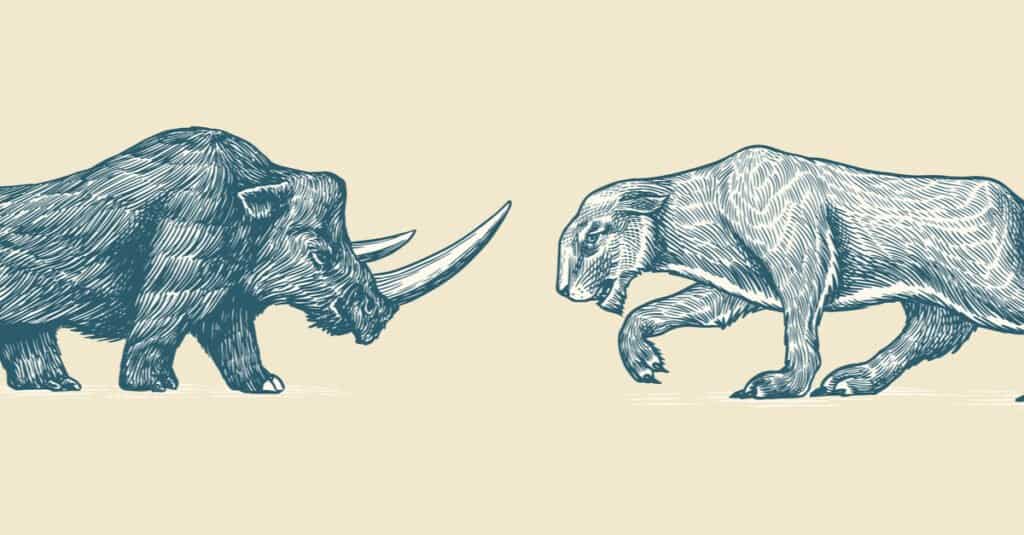
Cave lions hunted mastodon and giant deer before becoming extinct at the end of the last Ice Age.
©Arthur Balitskii/Shutterstock.com
Some of the largest felines to roam the planet were Cave lions, but they became extinct at the end of the last Ice Age about the same time as saber-toothed tigers.
Paleontologists think they were much bigger than 400-pound African lions and topped the scales at around 800 pounds. Fossilized cave lion remains measure up to 11.5 feet in length and show they stood 5 feet tall at the shoulder!
Interestingly, they are called cave lions, not because that’s where they lived, but because there are so many ancient cave paintings of them. These paintings show cave lions were greyish brown, and had a pointy muzzle, and no mane.
Cave lions most likely hunted mastodons and giant deer on open grasslands and forests using their paws that had 20 claws each and their large mouths filled with 5-inch-long teeth. Experts think cave lions had more powerful jaws than modern big cats, even estimating a bite force of 1,800 pounds – that’s double the bite force of a modern lion.
4. Javan Tiger (Panthera tigris sondaica)
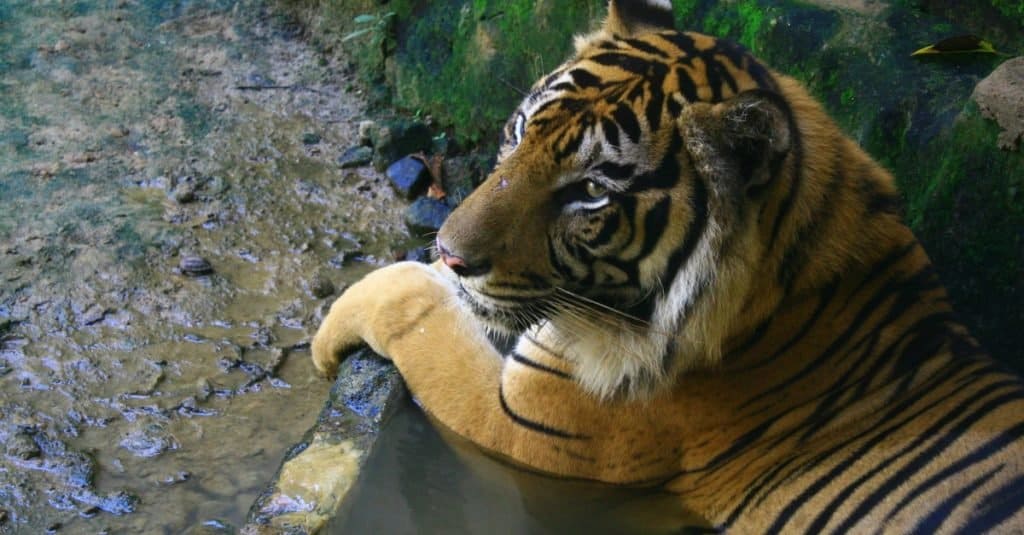
The Javan tiger hunted wild boar, rusa, and banteng on Java until it became extinct in 1976.
©Sigit Adhi Wibowo/Shutterstock.com
Coming back to modern extinct big cats we have the Javan tiger. This beautiful feline was a subspecies endemic to Java in Indonesia but it went extinct in 1979 due to habitat loss and overhunting for its skin.
These large cats had dense, dark orange coats with up to 100 brown-black stripes. They were smaller than other Asian tiger subspecies at only 98 inches (248 cm) long and up to 331 pounds (141 kg), but this was still large and powerful enough to hunt Javan rusa, banteng, and wild boar.
Although they used to cover nearly all of Java, their habitat had shrunk to the mountains and forests by 1940. 30 years later they were only seen in the very highest southeastern mountains. However, no Javan tigers have been seen since 1976.
5. Barbary Lion (Panthera leo leo)

Barbary lions were the same size as Bengal tigers but became extinct by 1960
©Petr Ganaj/Shutterstock.com
The Barbary lion was a subspecies of lion that lived on the Barbary coast of North Africa. It was also called the North African lion, the Egyptian lion, and the Berber lion.
They ranged in color from dark brown to light tan and the males were bigger than the females. Preserved Barbary lions measure up to 9 feet, 2 inches, and up to 650 pounds, about the same size as today’s Bengal tigers.
These impressive lions lived in forests, scrubland, and woodlands hunting Barbary stags, gazelles, and other small mammals like wild boar. As humans cleared wild spaces to make room for agriculture the lions’ habitats and prey opportunities shrunk. This brought them into contact with humans. When lions preyed on livestock, bounties were offered. This led to their extinction by 1960.
Ancient images portray what historians believe are Barbary lions in the Roman Colosseum. What a sad end for a once venerated big cat.
6. Bali Tiger (Panthera tigris balica)
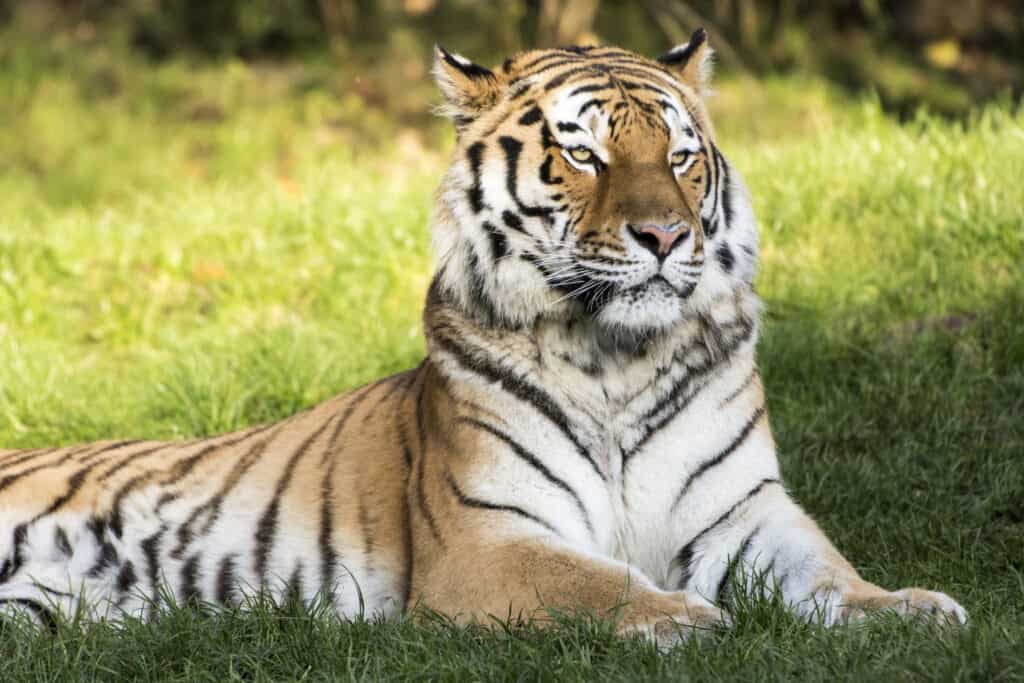
The Bali tiger was a stealth hunter which tracked prey across swamps, savannas, and dunes
©Gerckens-Photo-Hamburg/Shutterstock.com
Bali tigers were a tiger subspecies endemic to Bali, a small Indonesian Island. They are related to the endangered Sumatran tiger but they are smaller and darker in color.
The males weighed up to 220 pounds and were 91 inches (230 cm) long. Like the Javan tiger, they had dark orange fur with numerous black stripes. They hunted Javan rusa, wild boar, and small mammals in mangrove swamps, savannas, and dunes. They hunted using stealth before bringing their prey down with their long sharp claws.
The native Balinese believed the Bali tiger’s body parts were magical, so they were hunted for their whiskers, teeth, and bones. As humans cleared the forests and swamps for rice fields, the Bali tiger was pushed out. Intensive hunting for their pelts most likely finished off the last of the population, and the final few were officially recorded in 1930.
7. American Cheetah (Miracinonyx trumani)
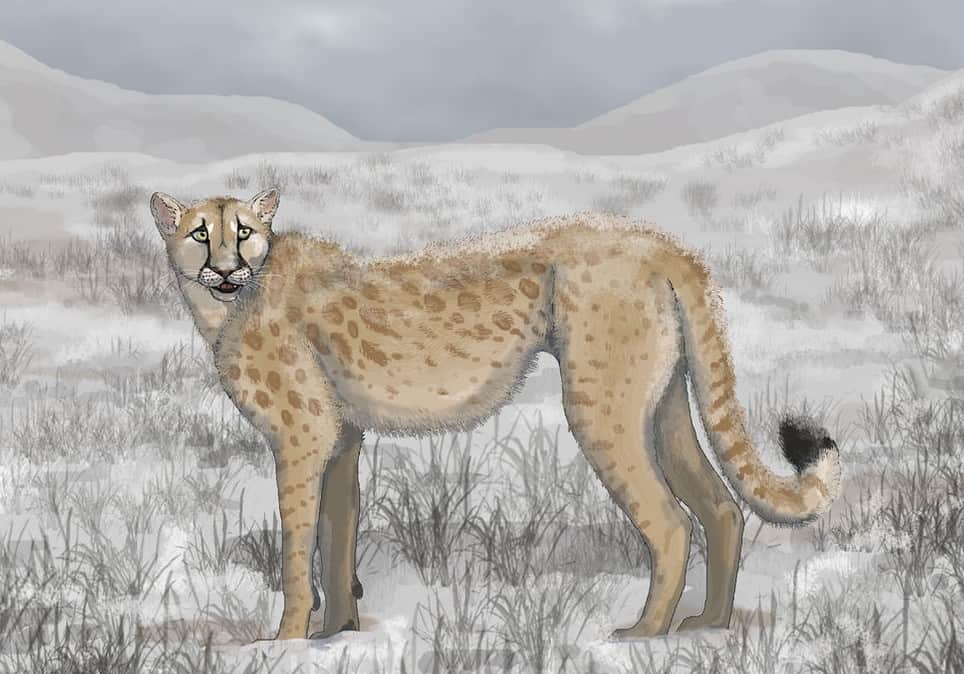
American cheetahs lived in North America during the Pleistocene epoch
©Sheatherius / CC BY-SA 4.0 – License
American cheetahs were a species of cat that went extinct in the last Ice Age about 10,000 years ago. Paleontologists think they were similar to our snow leopards but had slimmer, cheetah-like proportions to prey on fast antelope and mountain goats.
They lived in North America in the Pleistocene epoch and their bones have been found from West Virginia to Arizona and all the way to Wyoming. This fast big cat became extinct along with other megafauna most likely due to climate change as the ice sheets melted. This led to a lack of suitable prey. Early humans may have hunted them as well.
Some experts think pronghorn antelopes can run so much faster than any of their current predators because they were hunted by American cheetahs thousands of years ago. It’s a hot topic though, and no one knows for sure. If it’s correct, then the American cheetah would have reached a speed of at least 65 mph (104 kph) in order to catch the pronghorns.
Big Cats at Risk Today
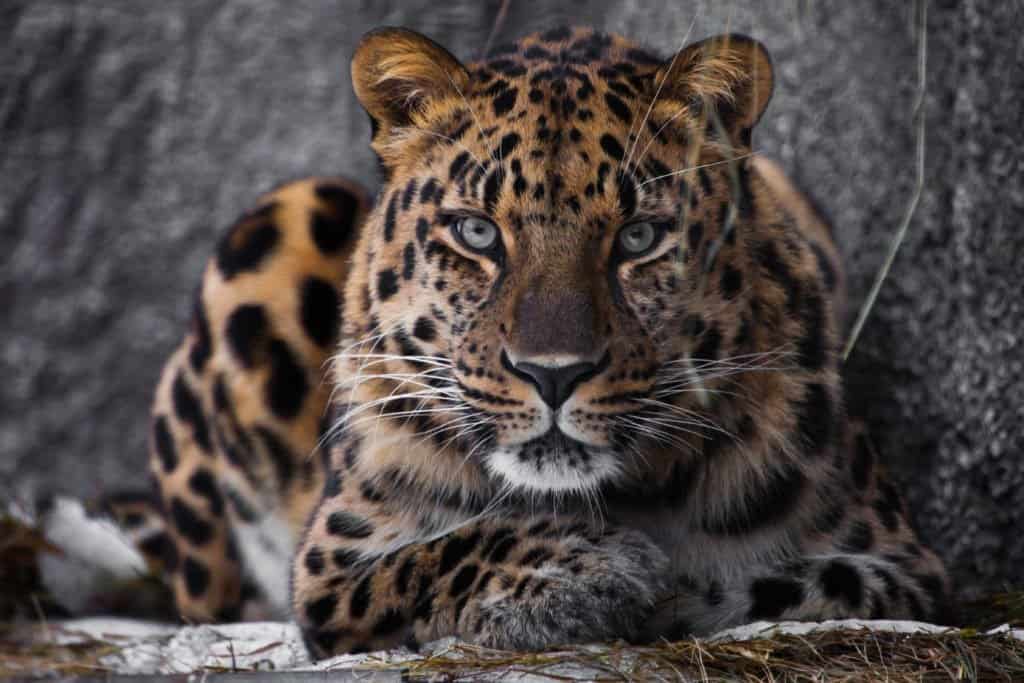
The Amur
leopard
is considered one of the rarest cats on earth. In 2007, it was estimated that only 19 to 26 wild leopards were living in southeastern Russia and northeastern China.
©Mikhail Semenov/Shutterstock.com
Extinct big cats are a stark reminder that most of our current big cats are under threat of extinction. There are seven big cats currently on the critically endangered list, including the West African lion, Sumatran tiger, Amur leopard, and the Asiatic cheetah. There are another 9 species of big cats on the endangered list.
The biggest problems for these big cats are habitat destruction and hunting. Government protections and scientists are working to help protect the final few individuals on the critically endangered list in an attempt to stop them from going extinct too. Let’s hope it’s not too late for these magnificent animals and that we will not have to add any more extinct big cats to the list.
Summary of 7 Extinct Big Cats
Here is a summary of seven big cats that have gone extinct:
| Rank | Species | Characteristics | Why did they go extinct? |
|---|---|---|---|
| 1 | Eastern Cougar (Puma concolor couguar) | Fourth largest modern big cat species; ongoing debate if this species is actually extinct. | Overhunting. |
| 2 | Saber-Toothed Tiger (Smilodon) | Had seven-inch long teeth and could weigh up to 630 pounds. | Climate change and a lack of prey. |
| 3 | Cave Lion (Panthera leo spelaea) | Could weigh up to 800 lbs and stood five ft tall, 11 ft long. Had a bite force estimated to be double of the modern lion. | Global changes at the end of the Ice Age. |
| 4 | Javan Tiger (Panthera tigris sondaica) | A small Asian tiger species with a dense coat. | Overhunting and habitat loss. |
| 5 | Barbary Lion (Panthera leo leo) | Could grow as large as a Bengal tiger; often competed with humans for land. | Habitat loss and poaching. |
| 6 | Bali Tiger (Panthera tigris balica) | A small Indonesian tiger. Bali natives believed that this tiger’s body parts were magical. | Overhunting. |
| 7 | American Cheetah (Miracinonyx trumani) | A fast, slender cat that some researchers theorize was once the main predator of pronghorn antelope. | Climate change. |
The photo featured at the top of this post is © iStock.com/CoreyFord
Thank you for reading! Have some feedback for us? Contact the AZ Animals editorial team.






